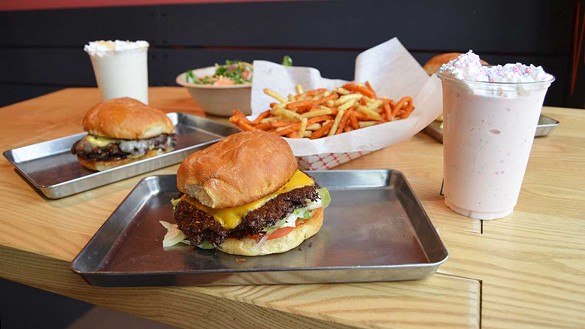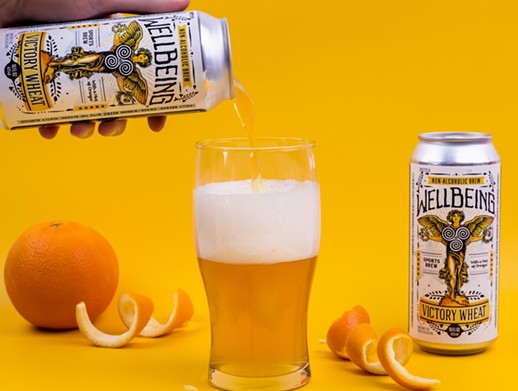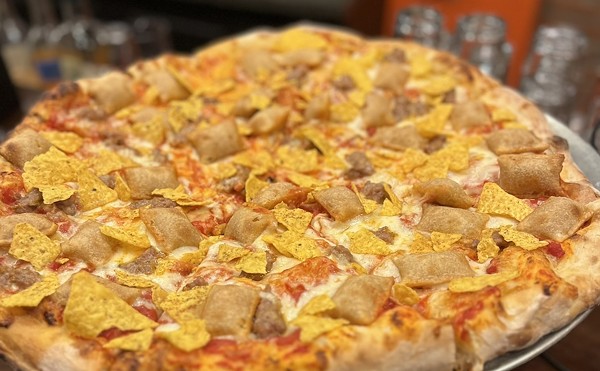From Bean to Bar: How to Make Chocolate
How to make chocolate in 20 steps. Read "Bean-to-bar manufacturers Patric and Askinosie are putting Missouri on the chocolate map." Photos by Nick Schnelle
Scroll down to view images
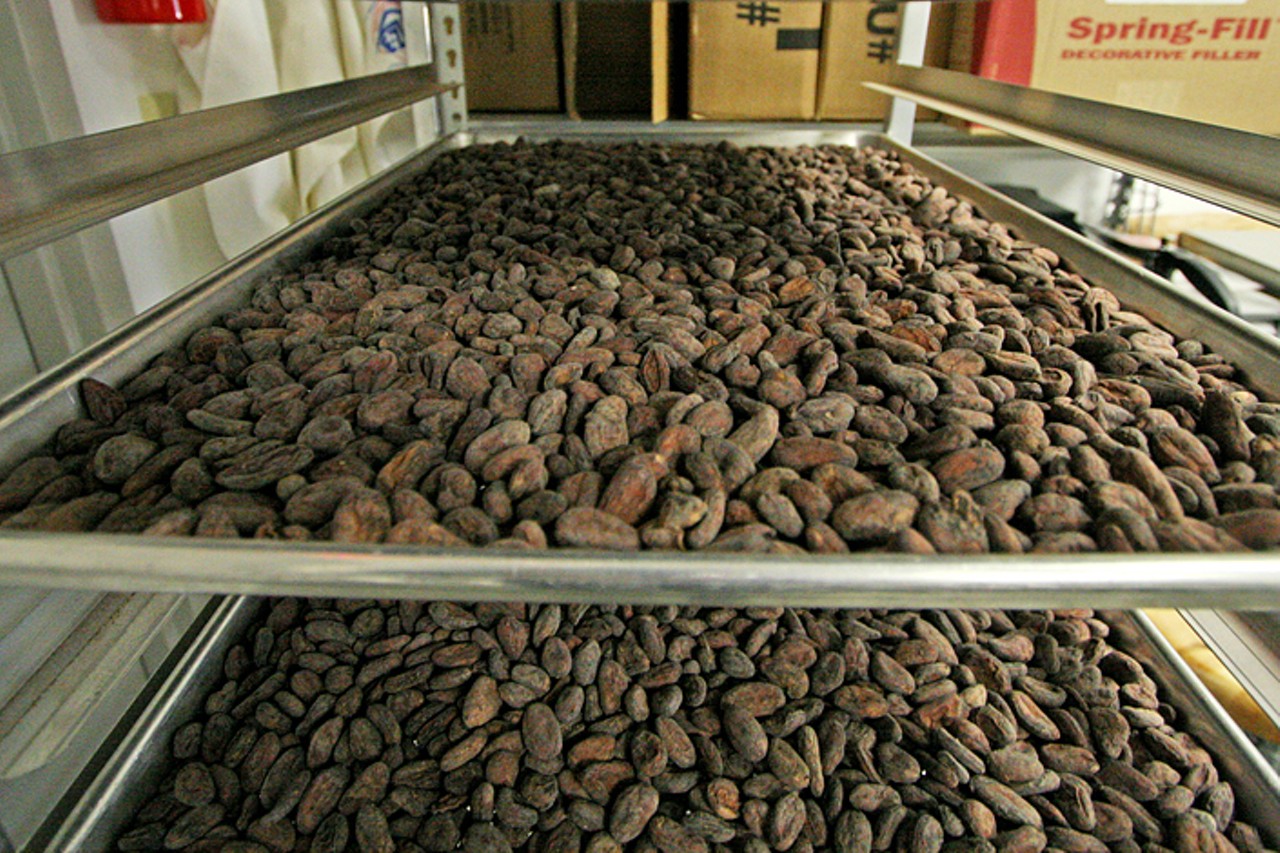
The process of Patric Chocolate’s bean-to-bar production is not like the Willy Wonka factory many may come to think. The company's artisan approach to chocolate-making begins with, and perhaps the most crucial decision, the cacao bean itself. Imported from Madagascar, the cacao beans at Patric Chocolate are first hand-sorted and laid onto racks.
1 of 20

The cacao beans are then roasted in an oven for 30 minutes to an hour at temperatures ranging from 230 to 300 degrees.
2 of 20
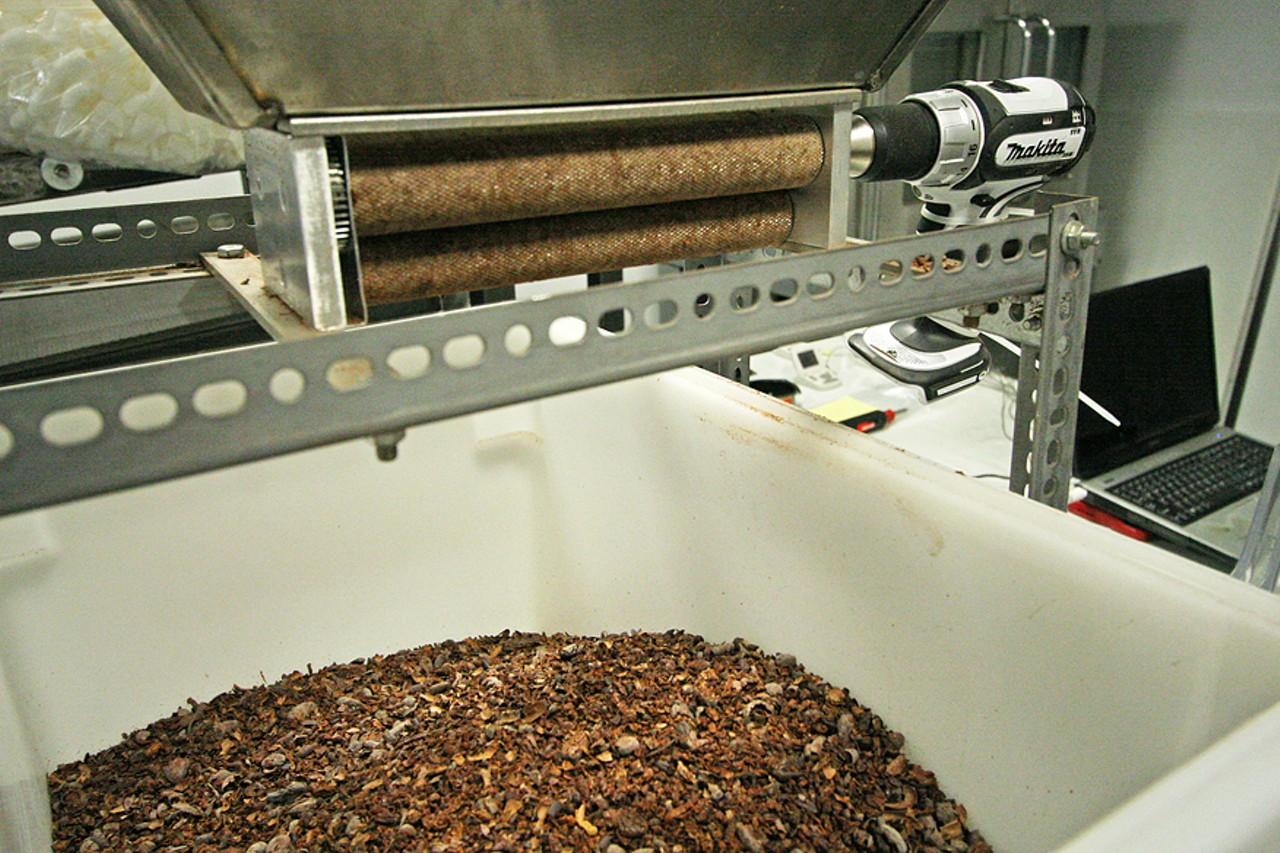
This machine is one of many that owner Alan McClure has built himself. Because the process has been refined down to a science, it sometimes takes machines that aren’t on the market to meet the high-quality standards McClure has placed on his chocolate.
3 of 20

The resulting chocolate bars only have two ingredients.
4 of 20
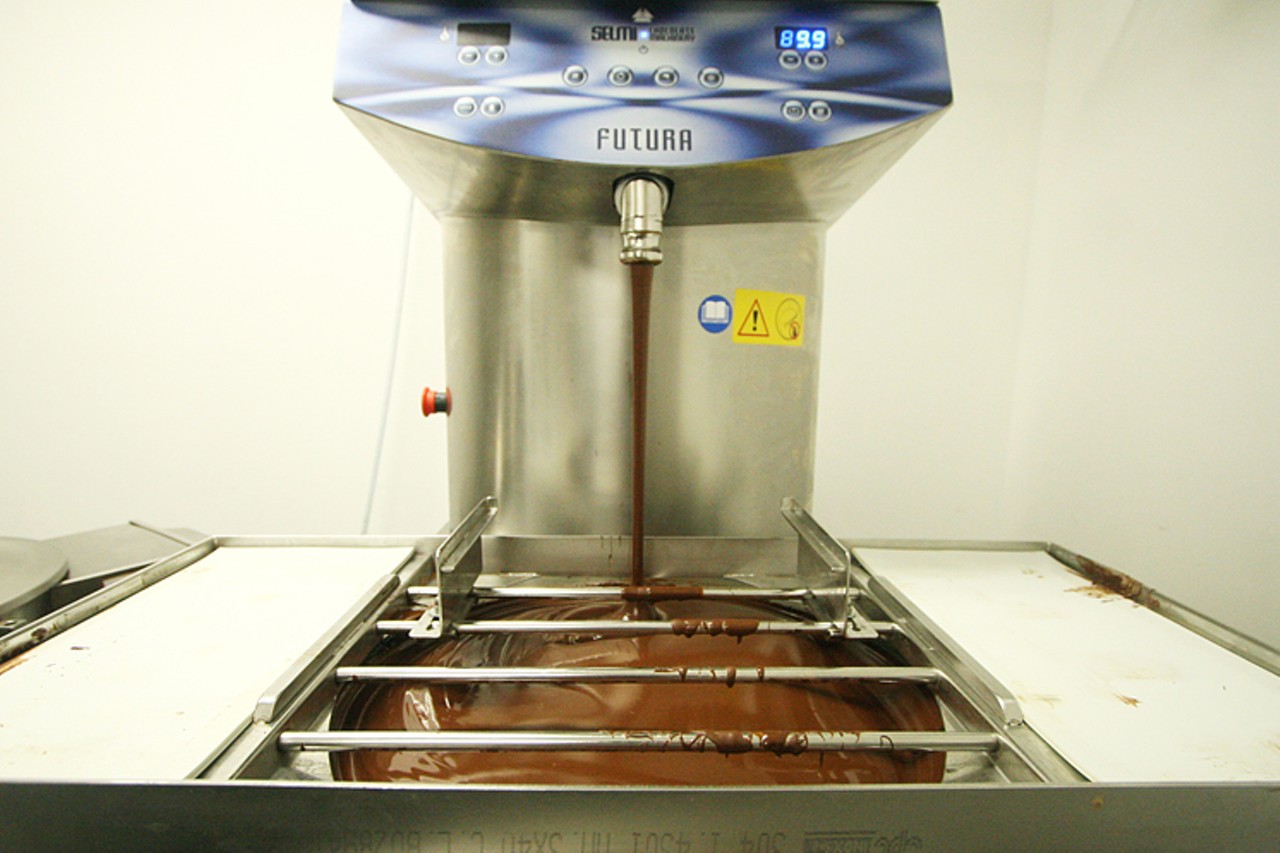
After the chocolate is developed, it’s then aged for one to two months for flavor development. Once aged, the chocolate can then be transferred to the tampering machine and depositor, where chocolate bar molds are filled.
5 of 20
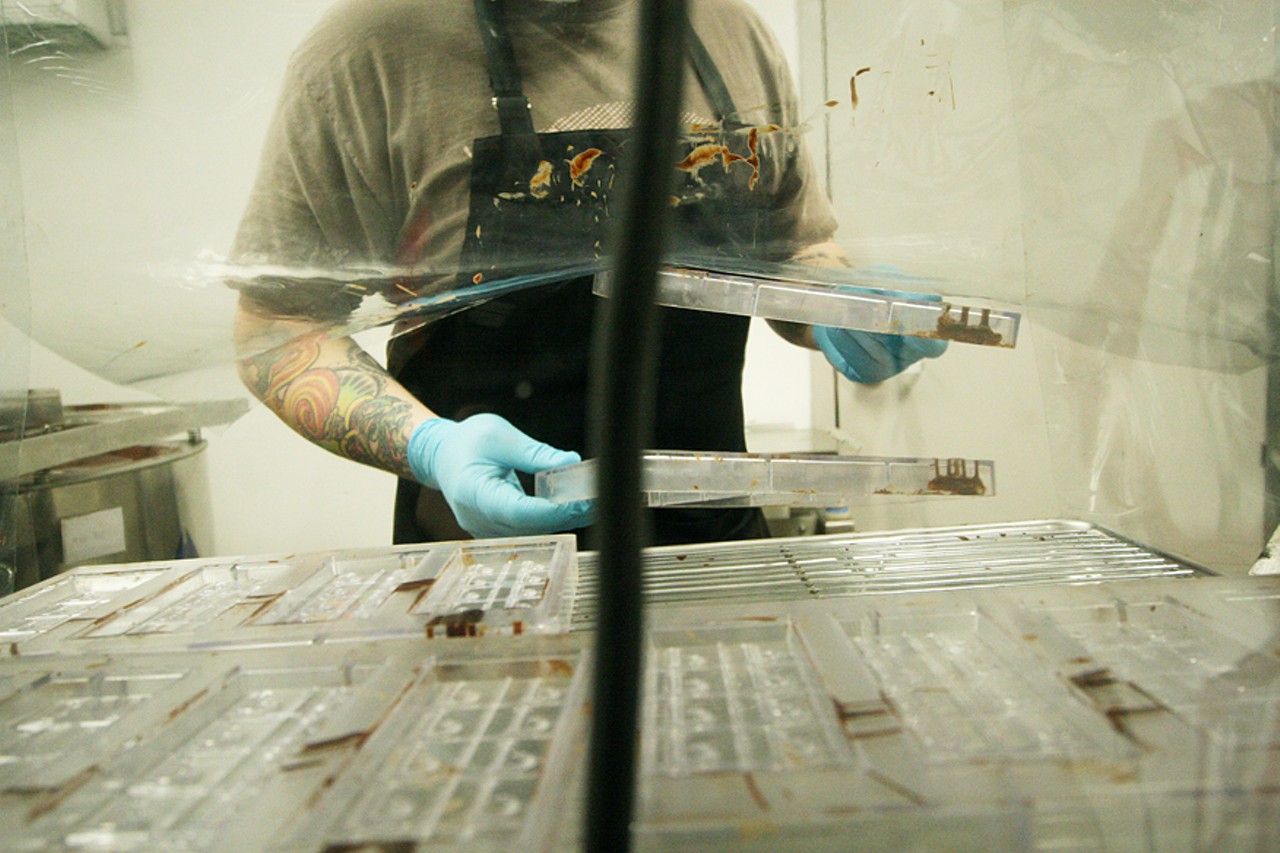
McClure lifts up the plastic covering of a house-made heating cabinet and sifts through chocolate bar molds. By heating the molds to the temperature of the chocolate the resulting chocolate bars will be as shiny as possible.
6 of 20
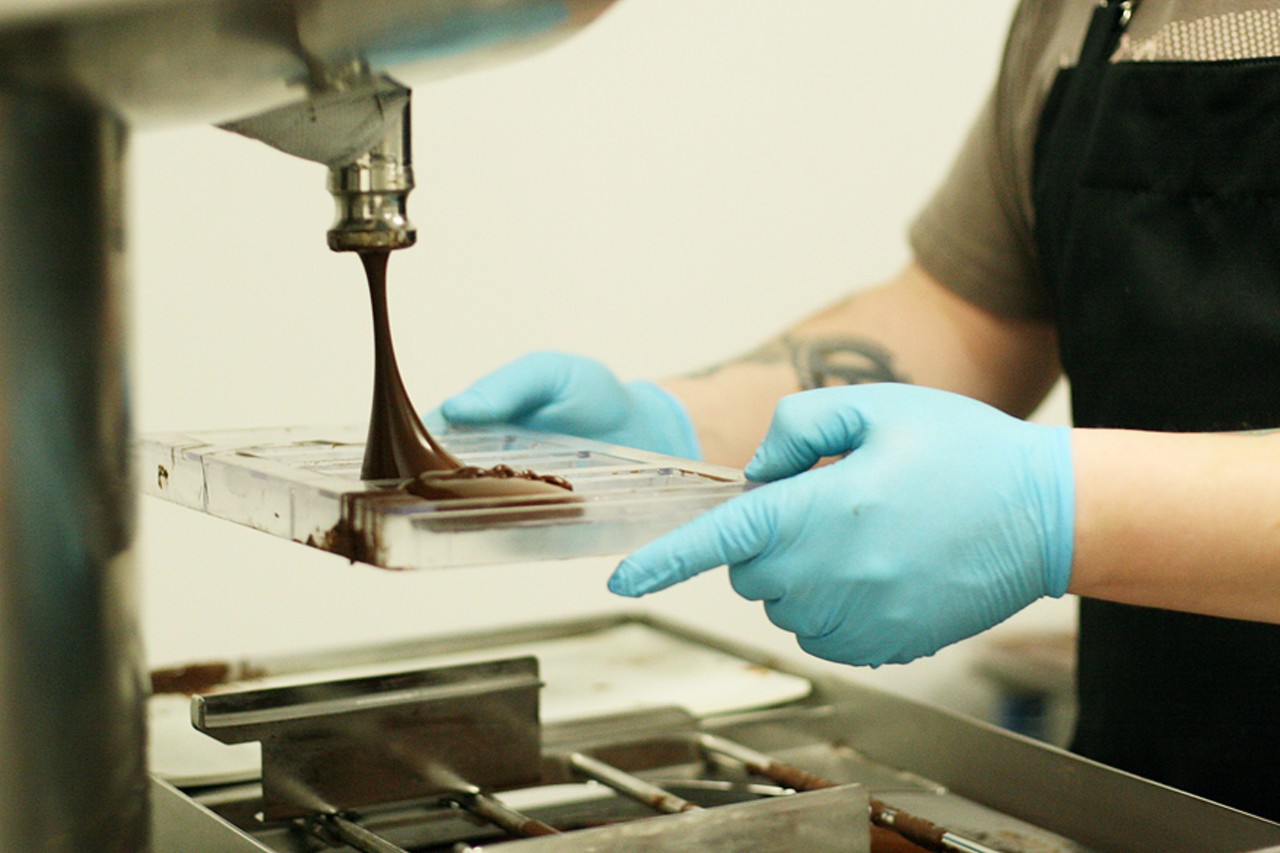
With a warmed mold in his hands, chocolate-maker Alan McClure passes it through the cascading chocolate, making sure to get the right amount in each bar impression.
7 of 20
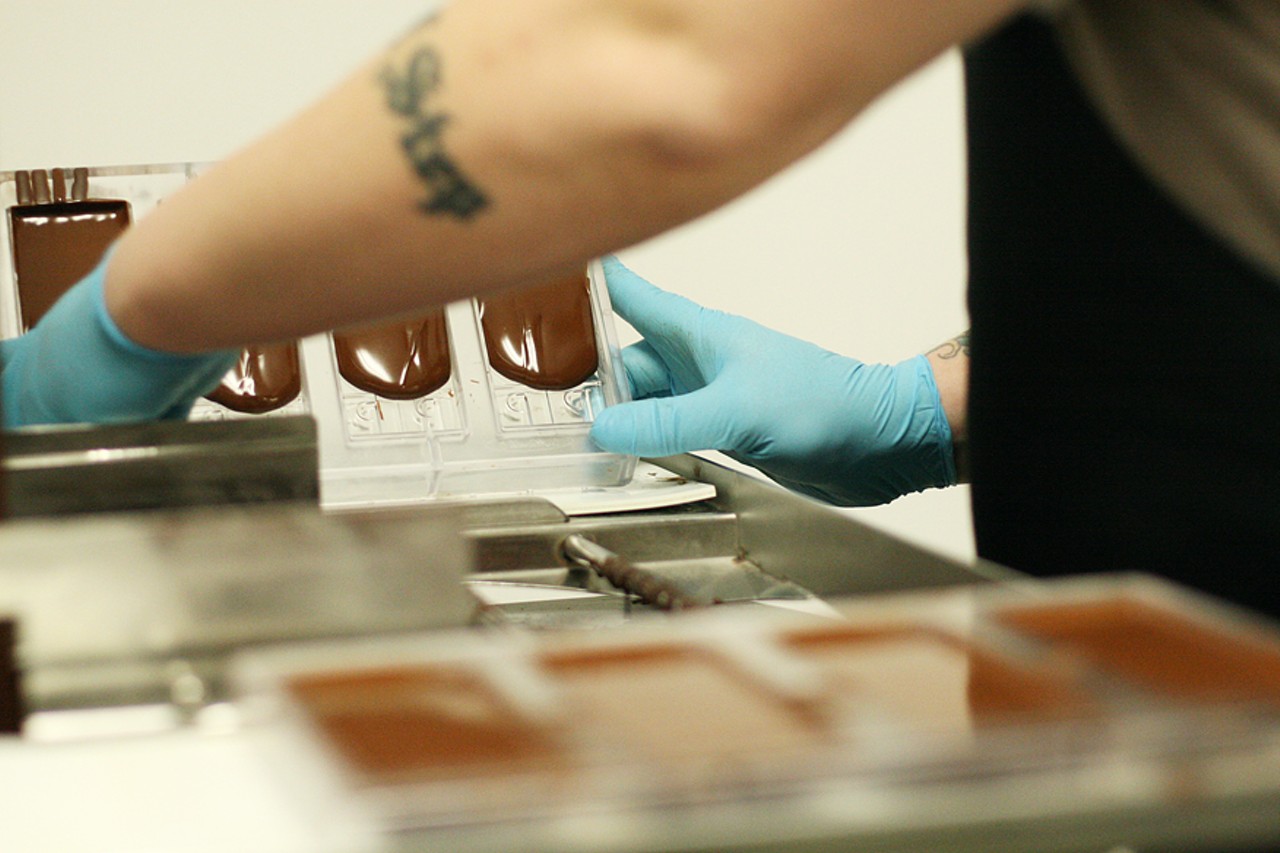
The semi-filled molds are then tilted so the chocolate can spread out fully in them. This is just one example of quality control that a machine can’t replicate.
8 of 20
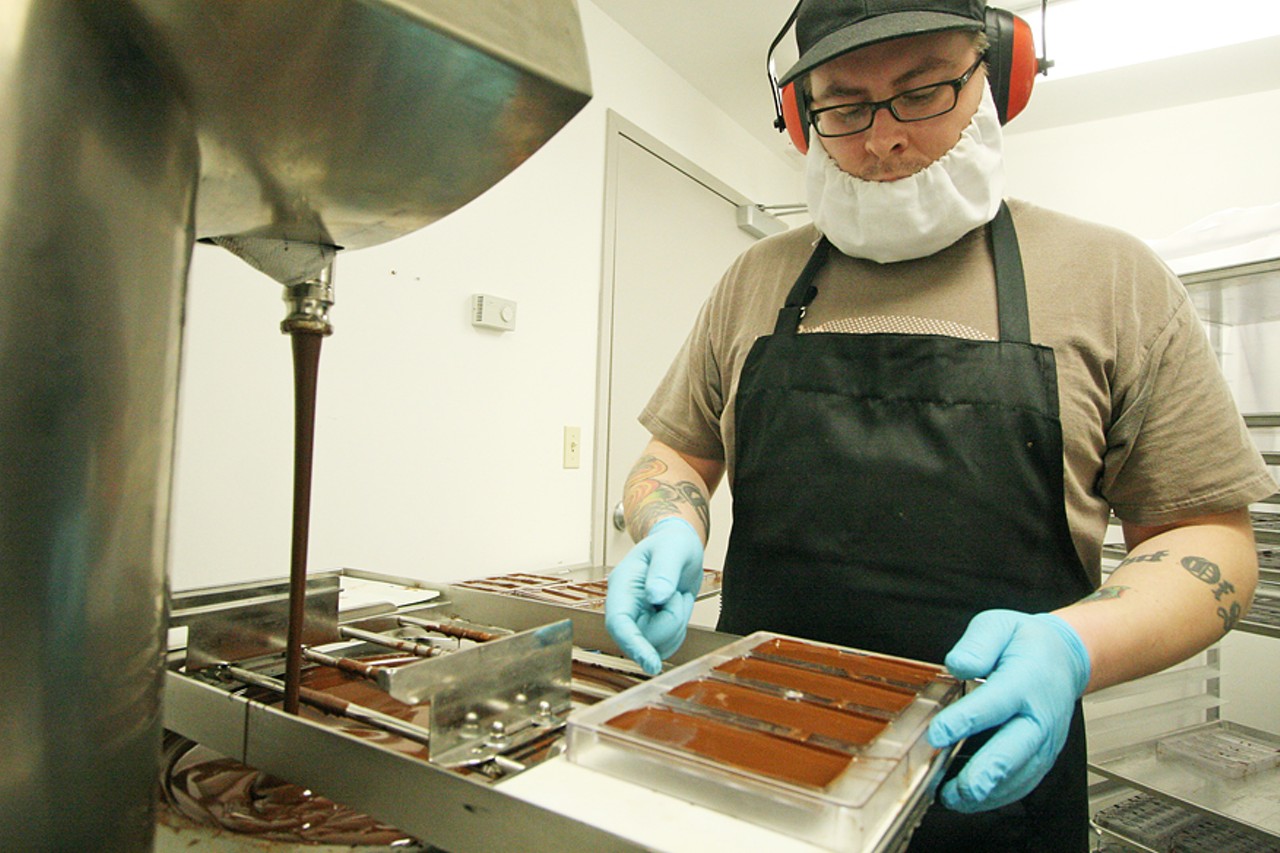
McClure taps the sides of a full mold that is placed on top of the tampering part of the machine that vibrates the molds. This tampering ensures the thickness of each bar and helps to distribute the chocolate evenly. The noise from the vibrating molds can get quite loud – which is why McClure wears ear protection when doing so.
9 of 20

The filled and tampered molds are then weighed out. Exactly 200 grams of chocolate goes into each mold, resulting in 50-gram bars.
10 of 20
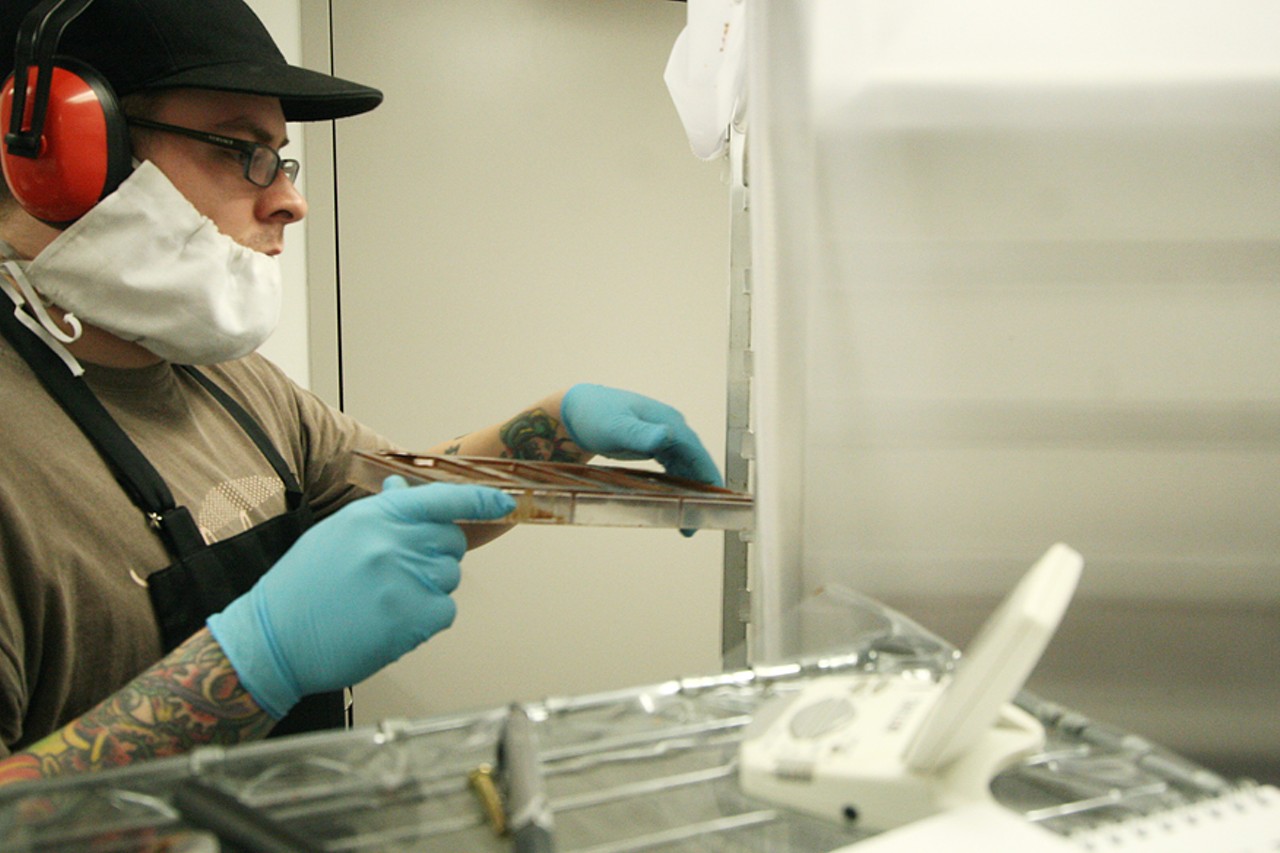
Finished molds then are placed on trays. The process is then repeated until multiple molds line a tray.
11 of 20

McClure hands off a tray to employee David Frieson. Frieson says if he was to give himself a job title it would be "Chocolate Elf."
12 of 20
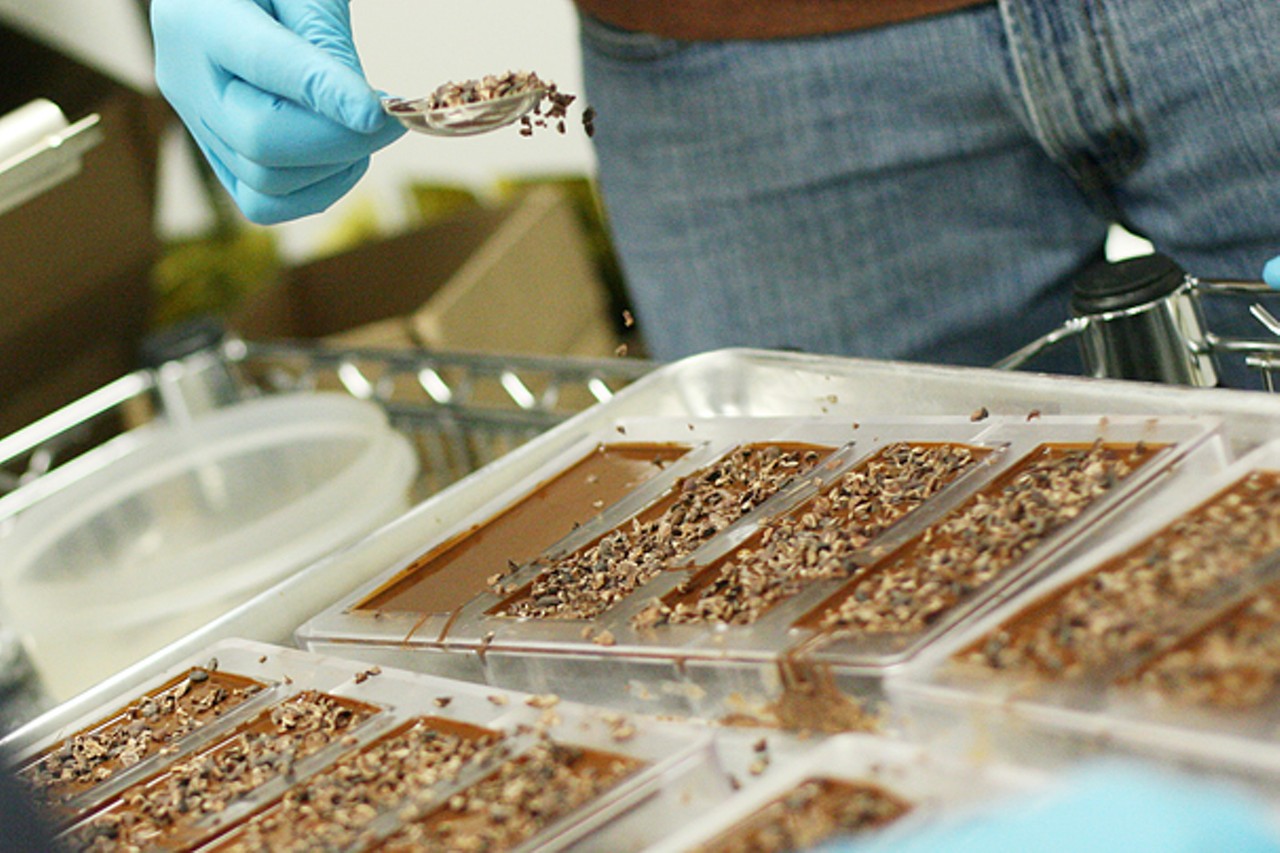
This batch of chocolate bars receives spoonfuls of 100-percent Madagascar nib topping.
13 of 20
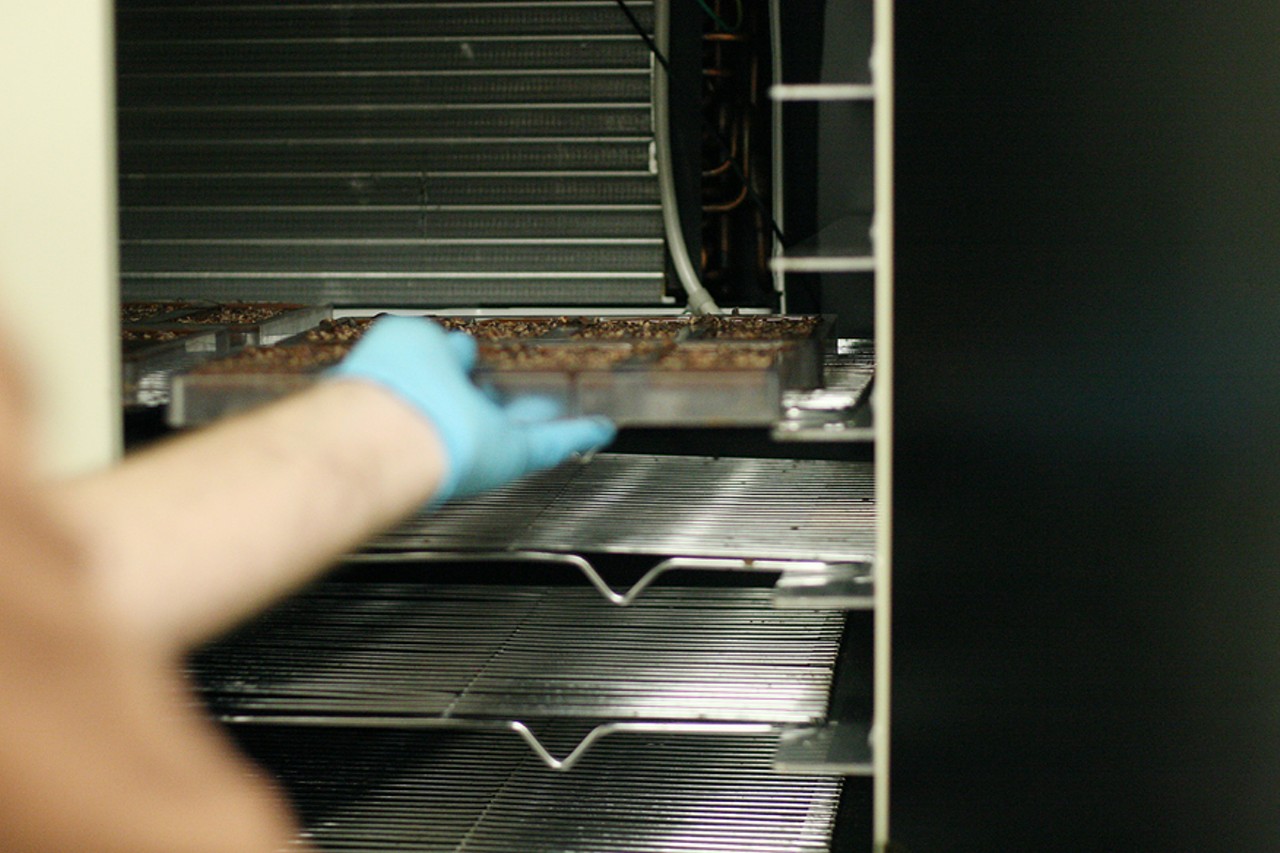
Molds are then placed into a house-made cooling cabinet, which are powered by air-conditioning units attached to the back, until the bars are fully released from the molds. It can take 15 to 20 minutes for the bars to cool down to 40 to 50 degrees.
14 of 20
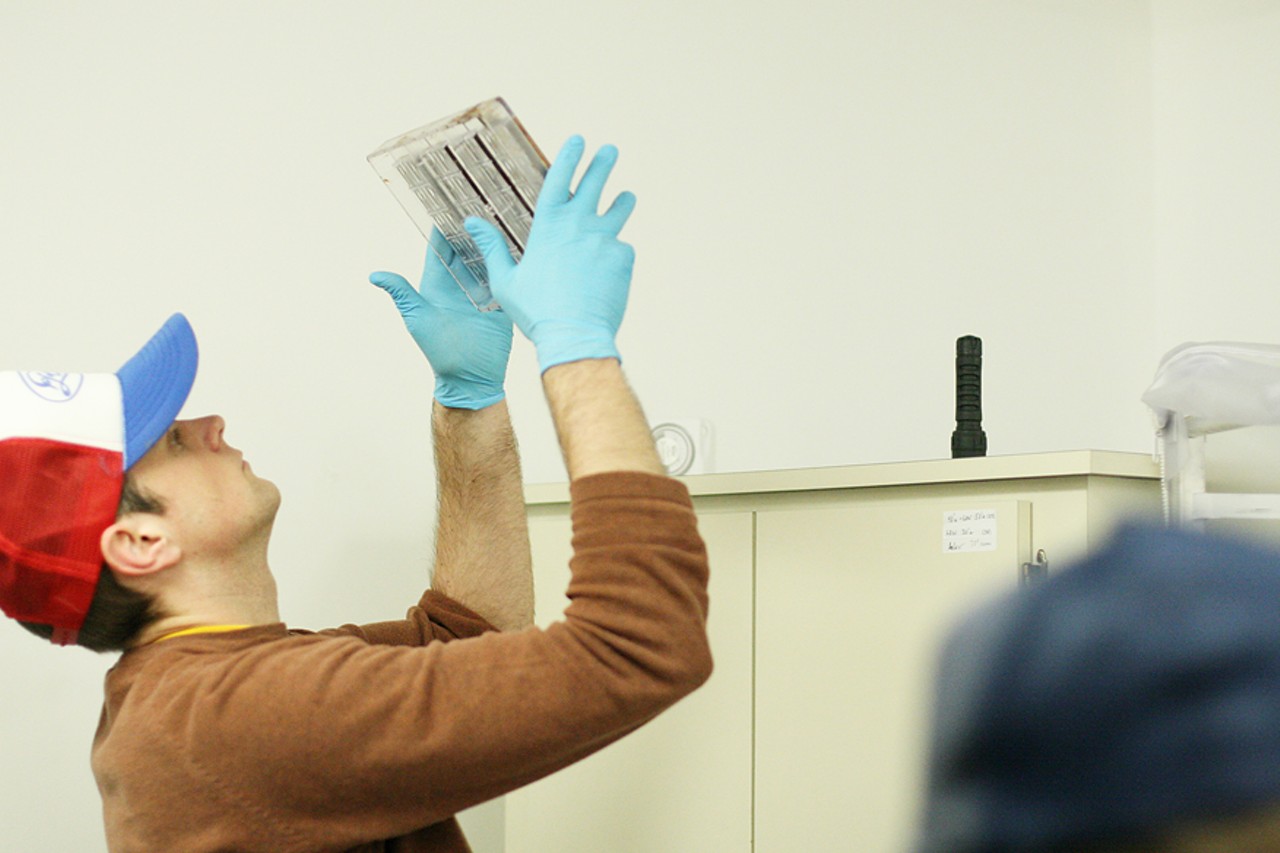
David Frieson visually inspects the back of a cooled mold to see if the bars are fully released from the mold. After they are approved, the molds then move on to the packaging process.
15 of 20
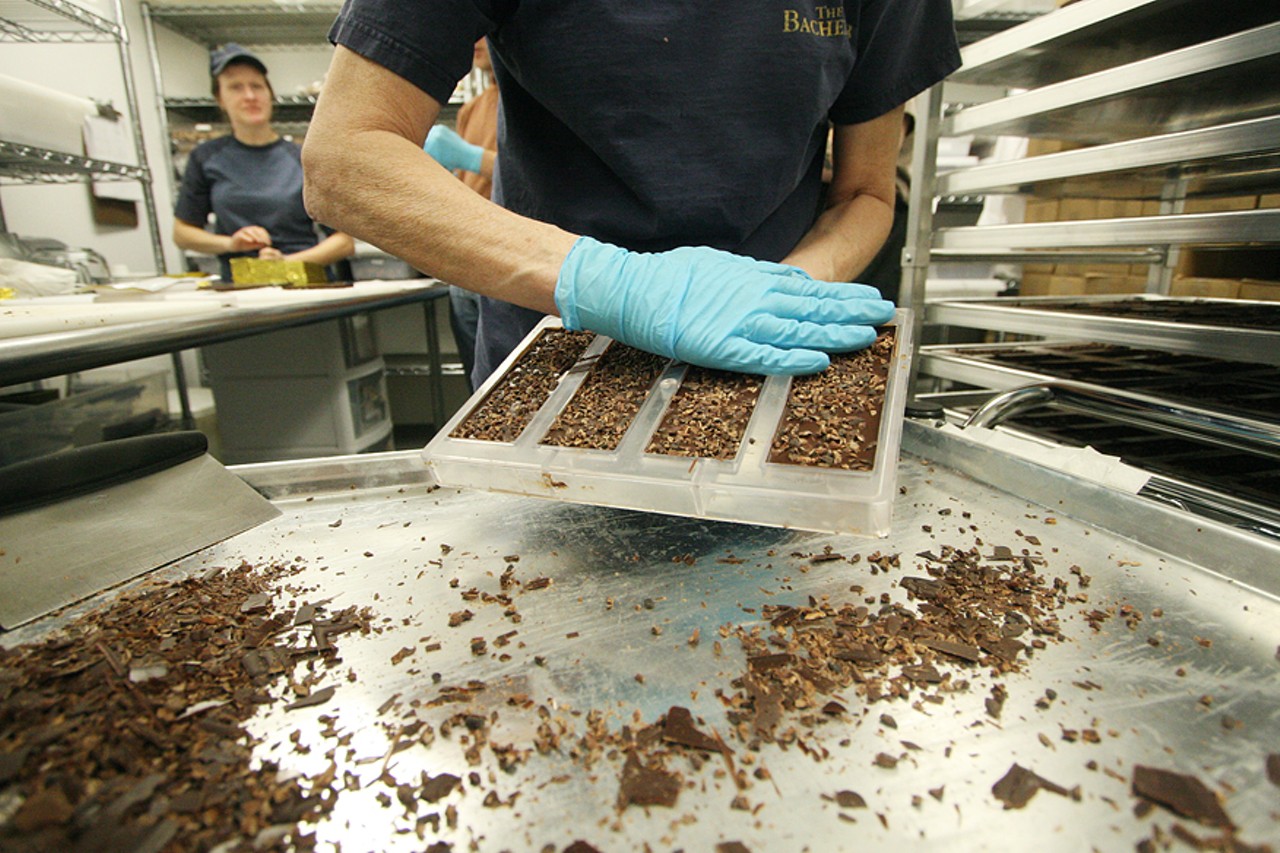
Chris Giroux wipes off excess nib topping off of a cooled mold.
16 of 20
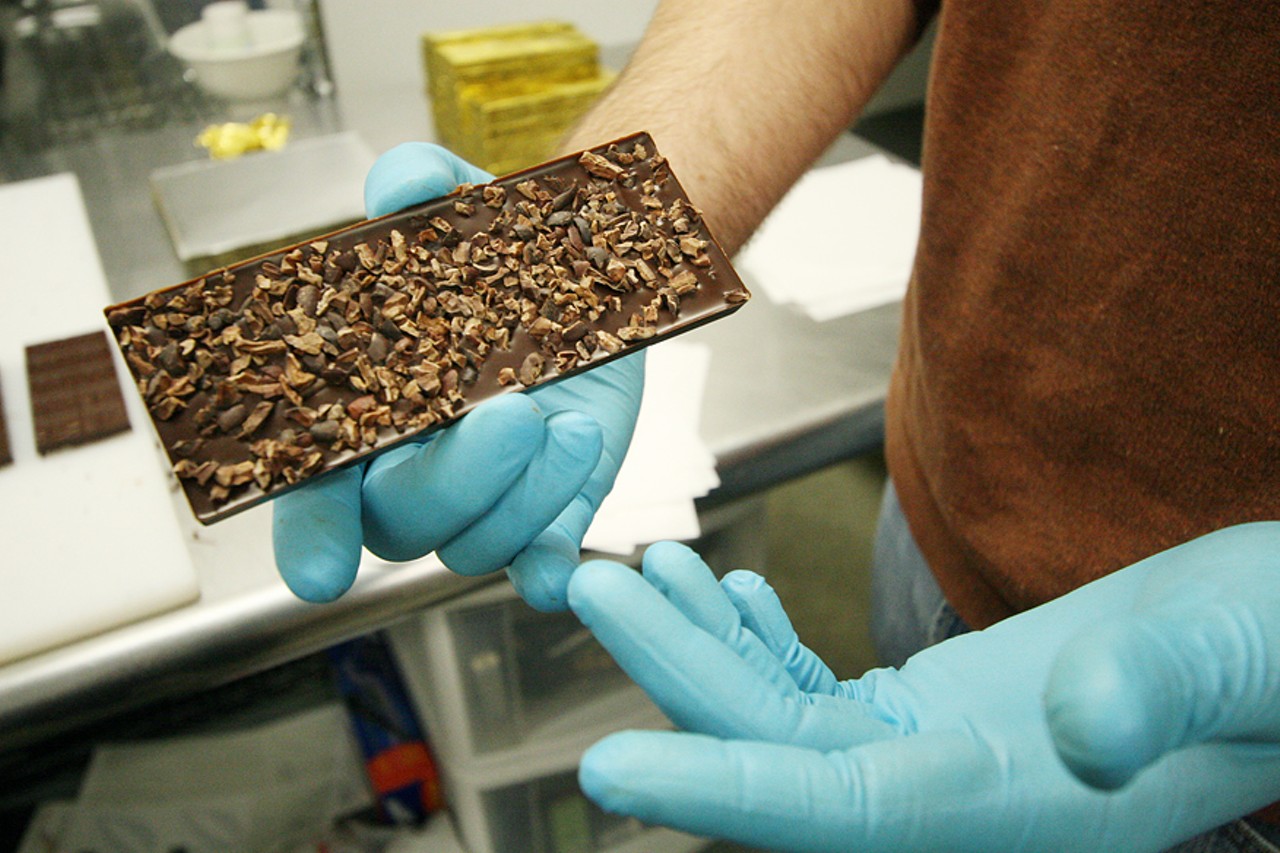
David Frieson displays what a completed chocolate bar.
17 of 20

Chocolate bars are released from their molds and laid out.
18 of 20
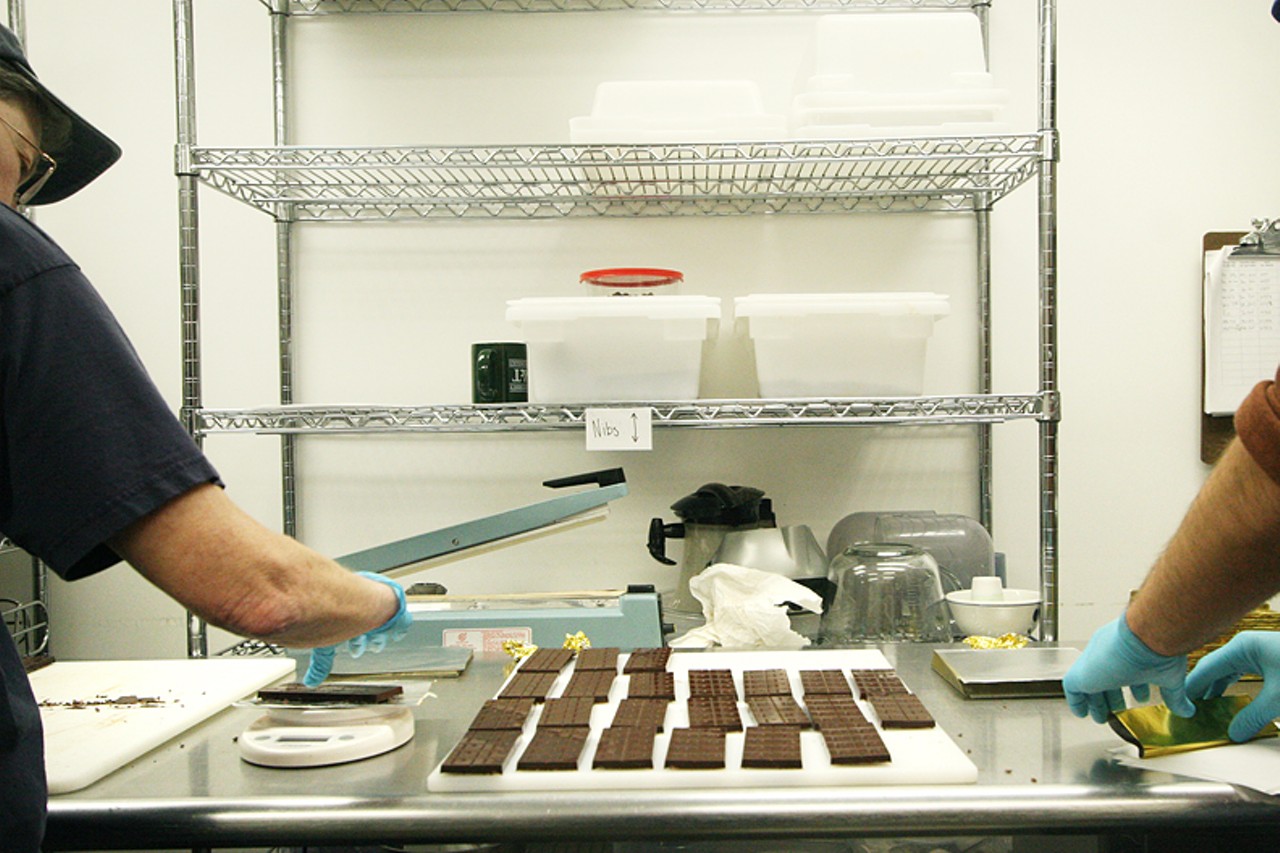
The bars go through more quality control as each bar gets weighed and wrapped by hand.
19 of 20
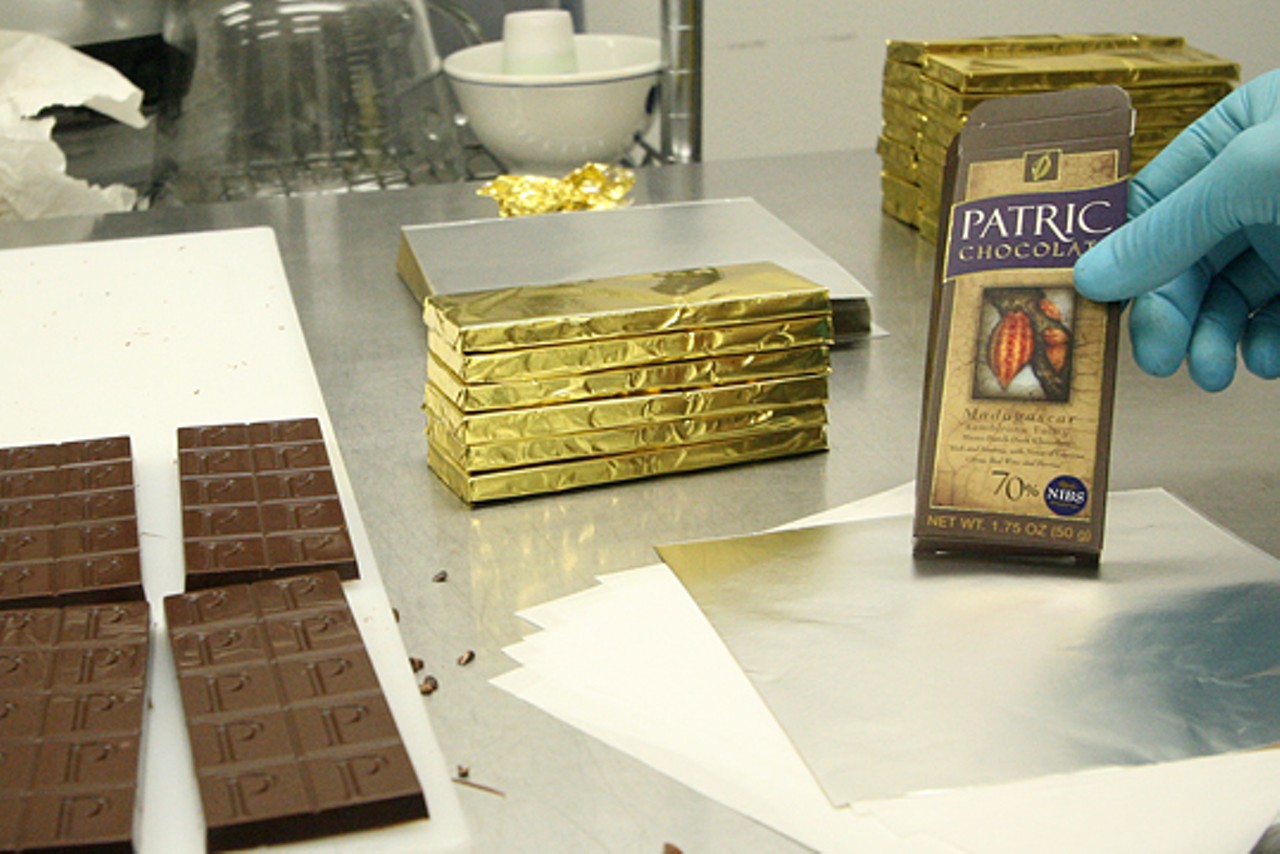
Finally, the wrapped bars are placed into their packing and the creation of a Patric Chocolate bar is complete.
20 of 20
- Local St. Louis
- News
- Things to Do
- Arts & Culture
- Food & Drink
- Music
- Movies
- St. Louis in Pictures
- About Riverfront Times
- About Us
- Advertise
- Contact Us
- Jobs
- Big Lou Holdings, LLC
- Cincinnati CityBeat
- Louisville Leo Weekly
- Detroit Metro Times
- St. Louis Riverfront Times
- Sauce Magazine

